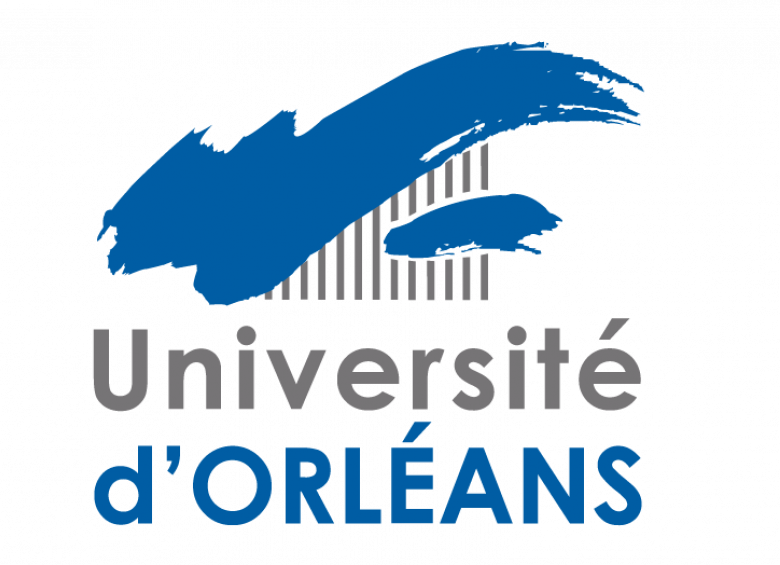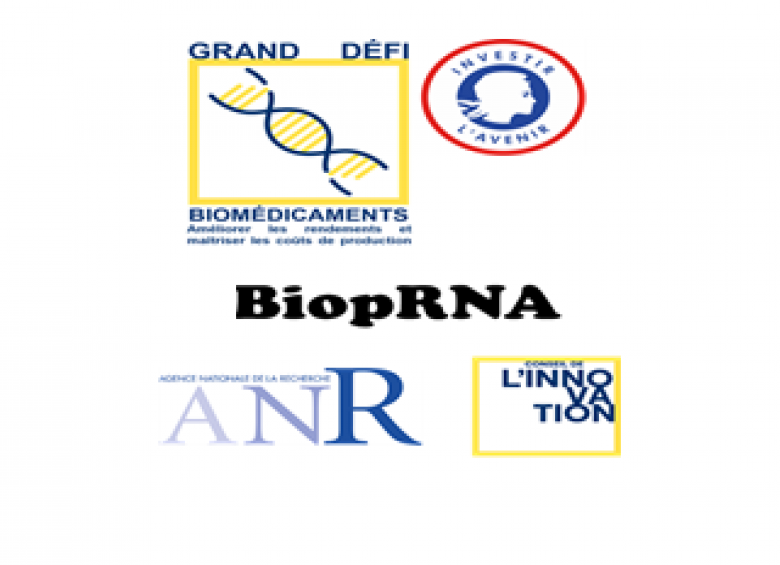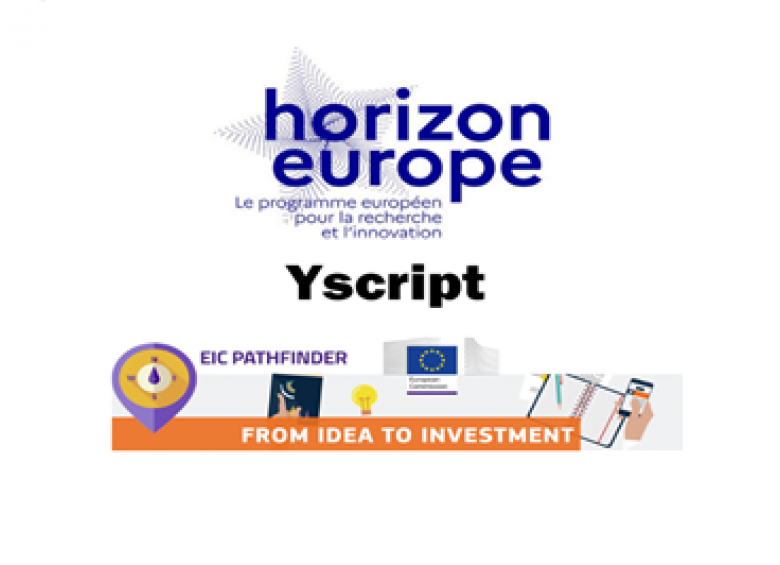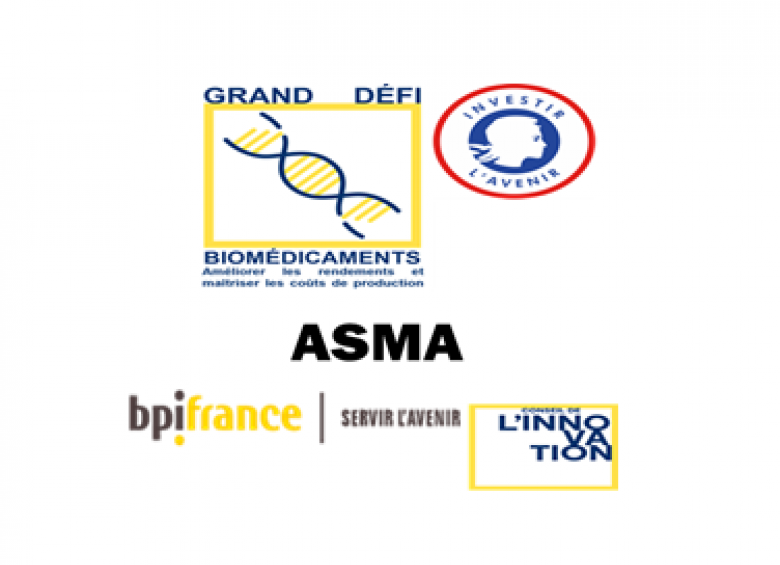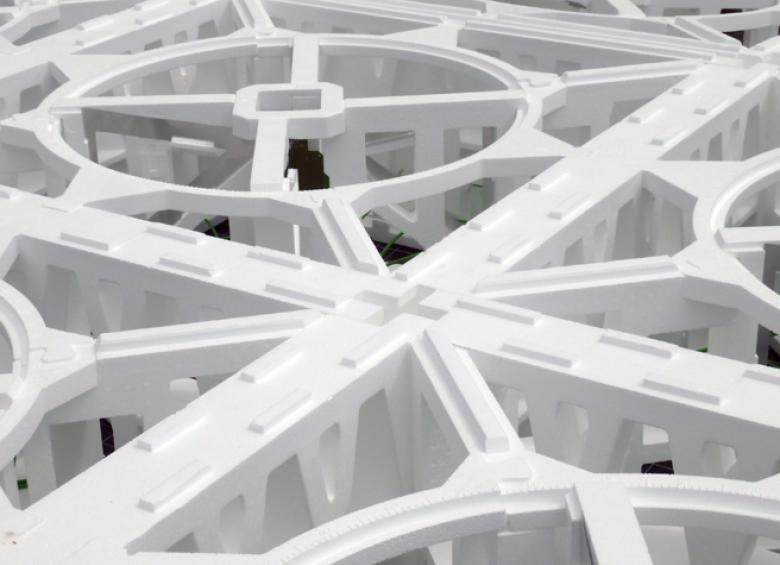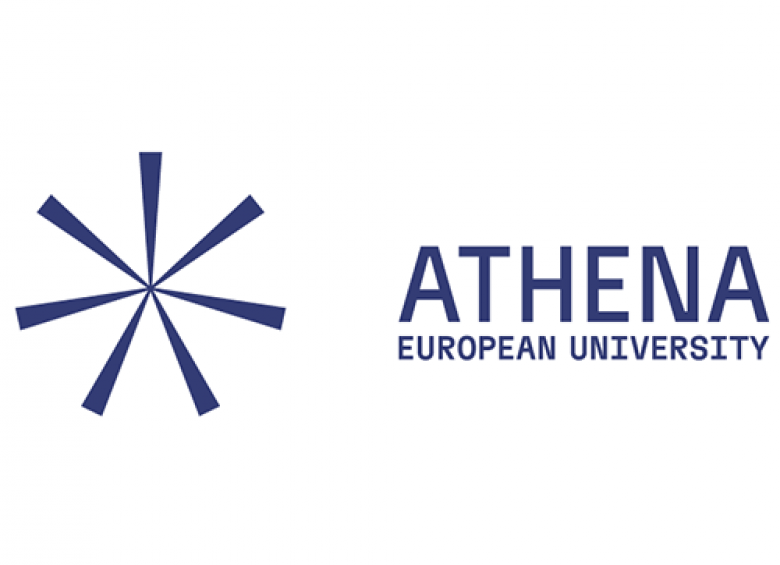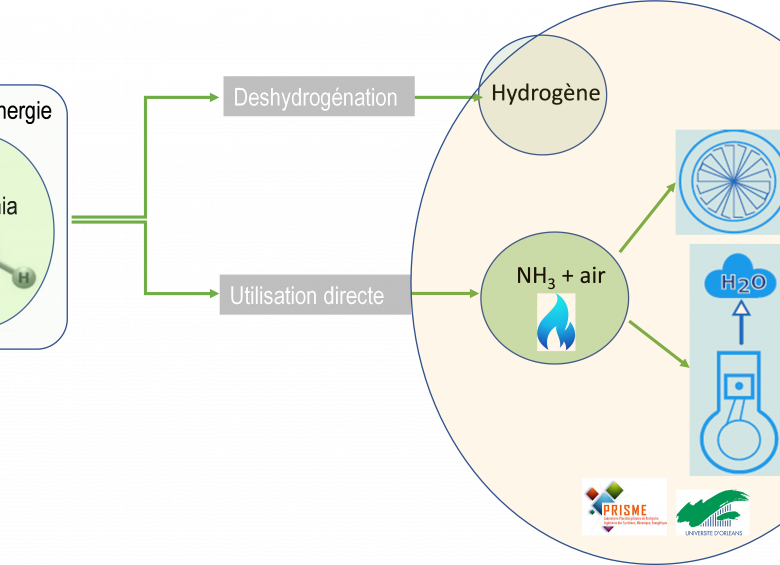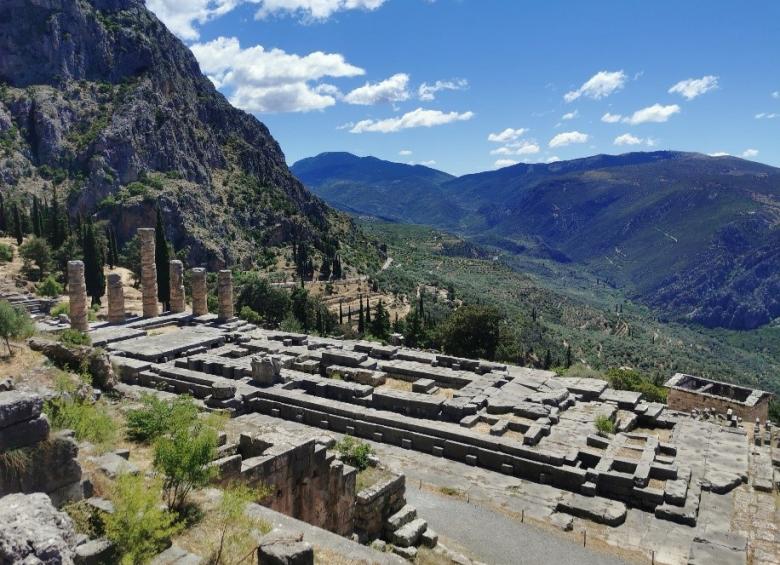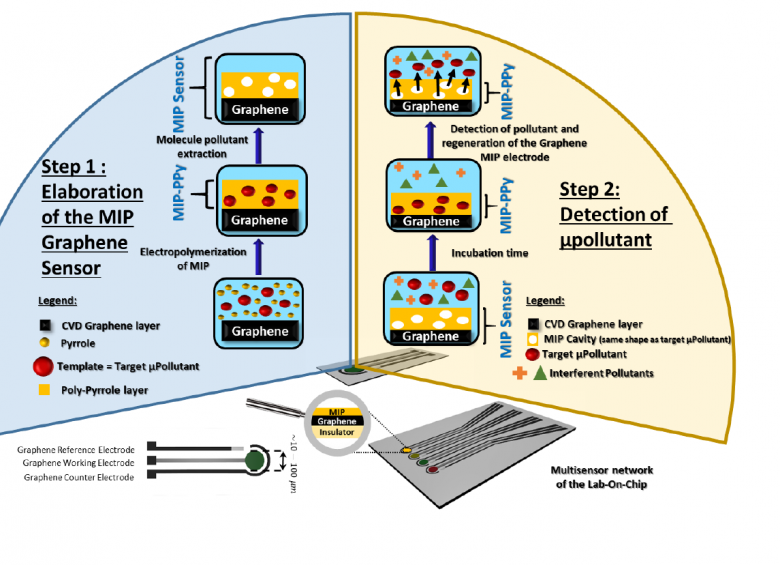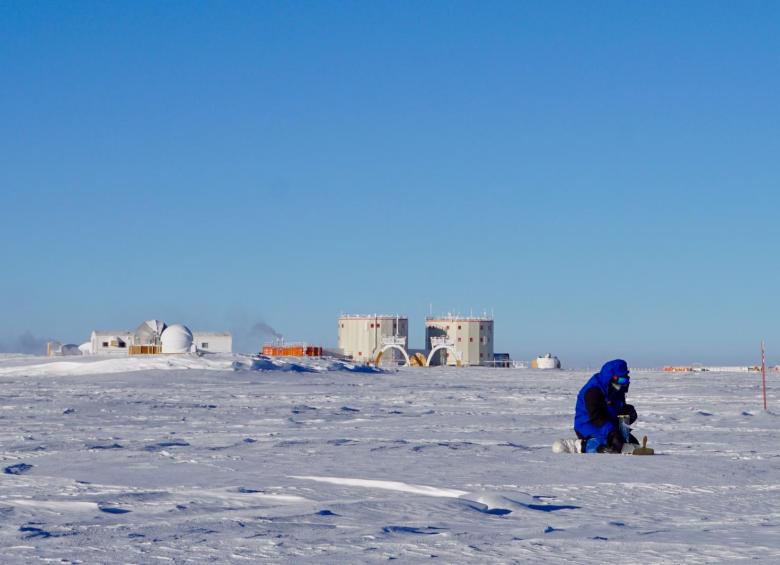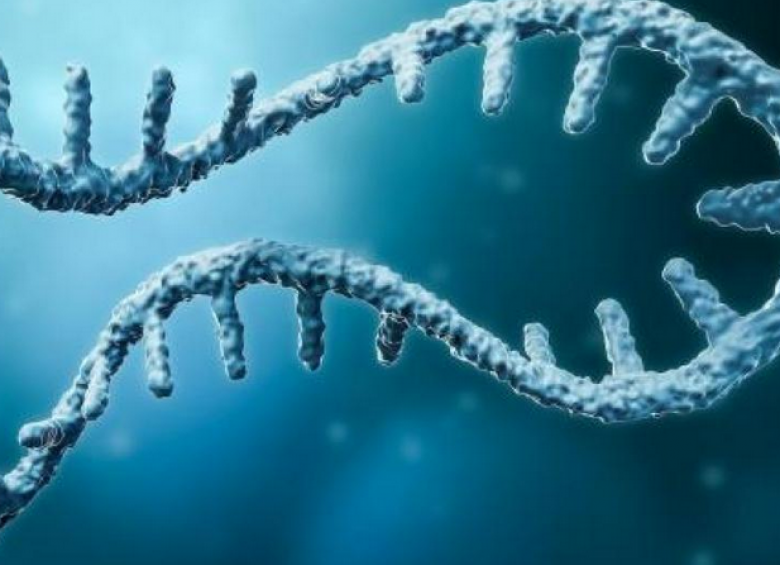On this page, you will find presentations of the new research projects obtained by our teachers-researchers.
BQR-UO 2023
Through the first call for projects entitled “Bonus Qualité Recherche” (BQR), the University of Orléans wishes to support primary and exploratory research that respond to great societal challenges.
In 2023, 10 projects were funded, most of which were led by associate professors (MCF) recently recruited within the institution.
3 projects respond to the societal challenge of “Health”, 3 to the “Digital Technology, Industry and Space” challenge, 2 to the “Culture, Creativity and Inclusive Society” challenge, 1 to the “Food, Bioeconomy, Natural Resources, Agriculture and Environment” challenge, and 1 to the “Climate, Energy and Mobility” challenge.
Development of an Integrated Microfluidic Platform for Intra-Cellular Flow Therapeutics
Current gene therapy requires to treat the patient’s cells with a sterile technology in order to re-inject the treated cells.
The different steps needed for these treatments are performed by various pieces of equipment that are often dedicated to a single technique. Alongside and for more than 10 years, microfluidics imposed itself in several scientific research fields as a vector of development for highly targeted processes.
This highly cross-disciplinary field is at the centre of this project, which aims to integrate, within a single platform, all the therapeutic treatment processes for the transfer of genes into living cells, in continuous flow, directly re-injectable into the patient.
This ambitious project gathers the various laboratories from the Orléans Grand Campus with complementary skills.
Interaction of Rotary Cylinders for Wind Power Production and Wind Power Generation (NEPTUNE)
For the design of new means of production and management of clean energy using wind energy, the NEPTUNE project offers an innovative approach based on clusters of rotors called Flettner.
These rotary cylinders use the wind to create a propulsion force that is perpendicular to the flow by Magnus effect in order to take better advantage of the wind energy.
The physics of the wake dynamics at the back of a cluster of rotating cylinders remains a scientific lock and will be studied in this project. This technology opens a new way for energy management for a wide range of applications (wind turbines, CO2 absorption farms, hydrogen storage, etc).
A demonstrator using this technology will be placed and studied in the Malavard great wind tunnel of the PRISME laboratory. It will include a cluster of rotary cylinders, turning naturally or by forcing thanks to engines.
The optimisation of rotation parameters will be done by using machine learning tools, which are already developed and used by our team, for an improvement of the aerodynamic performances of the whole.
Formation and Stability of High-Entropy Nano-alloys: A Combined Experimental and Digital Approach
High-entropy materials use configurational entropy to stabilize themselves at high temperatures. At a nanoscale, the application potential includes catalytic particles in fuel cells. Their properties can be precisely tuned due to the vast configurational space, to their enhanced stability at high temperature, where fuel cells operate, and to the high surface-to-volume ratio favouring chemical reactions.
However, these complex materials are not yet understood at the nanoscale. Thus, we offer to synthesize these nano-sized alloys by molecular beam deposition and to analyse their behaviour by high-resolution characterization techniques and by digital simulation in an international collaborative context.
The aim is to develop a joint experimental and digital approach in order to move towards a quantitative understanding of the structural stability of these nanoscale alloys, through the analysis of the effects of configurational entropy.
Anti-microbial Peptides from Microalgae, towards New Bio-sourced Antibiotics
The excessive and uncontrolled use of antibiotics in human and animal medicine can cause the development of a bacterial resistance to anti-microbial agents. This resistance to medicine is a biological phenomenon that cannot be avoided, whereas more and more resistant bacteria are still a serious threat for human and animal health.
Over the last decades, the search for new agents has intensified to identify and characterize new antimicrobial compounds. Natural antimicrobial peptides (AMPs) are increasingly studied for a clinical use on humans or animals, as new pharmacological anti-infective agents. Thanks to an appropriate complex metabolism and an great biodiversity, microalgae are one of the promising new natural resources for AMPs.
These photosynthetic microorganisms would also be a very promising alternative in cosmetics as preservatives, and in aquaculture as antibiofilms. In this project, we wish to identify and characterize AMPs of algal origin with the objective of making them a natural alternative to current antimicrobial agents for a wide range of industrial applications.
Characterisation of Genes Involved in Tick Resistance to Acaricides: Impact on Lyme disease Vector Ticks
The fight against ticks that are vectors of human and animal diseases is nowadays a major public health issue. The Ixodes ricinus tick is one of the most common in Europe and is involved in many pathologies transmitted by ticks such as Lyme disease.
Currently, few treatments are available to fight against ticks and limit the infectious diseases they transmit to humans and animals (including both pets and farming). One of the strategies implemented is the use of neurotoxic acaricide compounds.
The TAChTick projects aims to identify new molecular targets and resistance genes against acaricides. The project will particularly focus on the molecular and pharmacological characterisation of cholinergic receptors of nicotinic and muscarinic type that are present in the tick’s synganglion (nervous system). Molecular biology (cloning and site-directed mutagenesis) and electrophysiology approaches will be implemented in order to understand the mechanisms involved in the I. ricinus tick’s sensitivity/resistance for acaricide compounds.
Study of the Toxic and Inflammatory Effects of Vincristine and its Metabolites in the Development of Peripheral Neuropathies
Vincristine (VCR) is a widely used chemotherapeutic agent in the treatment of adult and pediatric lymphoma. Its neurotoxic side effects are however responsible for peripheral neuropathy in 30 to 40% of patients. They may lead to a discontinuation of treatment.
Pre-clinical studies are providing new insights into the pathogenesis of VCR neuropathy. Our research team is interested in the toxicity of VCR on various tissues, in the short and long term post-treatment. In a mouse model treated with VCR, we have observed an early neuropathic phase associated with tissue damage, followed by a late phase known as recovery phase.
This evolution of the neuropathy could be linked to the pharmacological properties of VCR. This is why our project aims to characterise, in our mouse model, the bio-distribution of VCR and its main metabolites in mice at different post-treatment times.
Furthermore, the toxicity of VCR and each of its metabolites will be assessed on different cell cultures, in order to understand their effects on cellular parameters such as morphology, activation level, release of inflammatory mediators, autophagy and cell communication.
Semantics of Temporal and Reactive Systems
The Internet of Things appears in the form of devices, most often connected to a multitude of other devices; these connections consist of a permanent and uninterrupted exchange of data. Some applications, in the medical field for instance, require a very high degree of trust and security in the software used. The analysis and verification of these programmes (known as reactive) is therefore a crucial issue both scientifically and socially, at the heart of the themes of the leader’s team.
This project takes a fundamental and exploratory approach to these questions, from the point of view of purely theoretical and mathematical analysis. We seek to develop mathematical representations of programmes through which continuous data transit, so as to be able to reason about these tools at the highest possible level of generality; in particular about resource consumption and data duplication in this context.
Studies of the Acceptability of Algorithms: Two Experimental Applications in Finance and Energy
This project takes places in a context of an increasing use of algorithms and artificial intelligence in developed countries with a market economy. Indeed, thanks to a simplified application, these new technologies could be implemented is various sectors of the economy. In this way, households saw their exposure to algorithms and AI increase over the last decade.
Due to the transversality of this digital transformation, households are subjected daily, either with minimal consent or voluntarily, to algorithms in order to carry out various economic activities, such as optimizing their electricity consumption, delegating the management of their savings or their retirement, or even searching for goods and making purchases online.
Consequently, the development of these technologies raises the question of the evolution of the nature of the relationship between humans and both algorithms and AI. Finally, the unobservable nature of this relationship in observational data requires the implementation of laboratory testing to understand the underlying determinants.
Reception of Classical Antiquity in Contemporary Japan
The Translatio programme considers the reception of Greco-Roman antiquity in contemporary Japan. Result of a collaborative research between POLEN and REMELICE and other laboratories abroad, this programme has organised several scientific events since 2019. It contemplates the cultural interaction dynamics between two civilizations that did not cross paths in time or in space.
However, the Greco-Roman matrix, omnipresent in the Western world, also constitutes a cultural reference (in literature, pop culture, architecture) and an aesthetic ideal in the Japanese archipelago. In particular, it has allowed the development of university knowledge in Japan, as a foundation for higher education and academic training, thus becoming an ethical-political norm.
The perspective of the Translatio programme, which is diachronic, multiscale and cross-disciplinary, considers more broadly the complex reception of the Mediterranean world (5th century BC - 3rd century AD) in Japan since the end of the Meiji era (1868-1912), which corresponds to its entrance in modernity. It aims at highlighting the “connections that remained unnoticed on a macro-historical scale” (RICOEUR 2000) between these two cultural areas.
Participatory Research & Live Performance: Interactions and the Role of Emotions in the Appropriation of a Scientific Message
Our project aims to develop a scientific culture with and for society. This project originates from the already existing collaboration between researchers from the INEM and the ERCAE and the Agence Vertiges, around the development of scientific mediation tools.
The project consists in implementing a form of participative research with secondary school teachers around questions linked to health education, and to not only analyse the collective building process, but also the benefits of this approach for all players.
Within the scope of participative research, the creation and the evaluation of an artistic project will also be done to measure the appropriation of scientific knowledge and the development of the critical mind of pupils involved in this project.
In addition to the promotion of the INEM laboratory’s research work on questions related to health for a school audience, scientific benefits are expected: new scientific communication and educational training tools for doctoral students, teachers-researchers and secondary school teachers.
"Hydrogen, the fuel of tomorrow?"
- PL-H2 Project | Heavy-duty hydrogen combustion engine demonstrators
- HYCEVAL Project | Design and construction of 2 hydrogen intern combustion engine demonstrators
Discover the press release below (in French).
"Bioproduction of Therapeutic mRNAs and Vaccines” (BiopRNA) Project
The success of mRNA vaccines for COVID-19 has shed a light on the huge potential of messenger RNA for a wide range of therapeutic applications. In vitro transcription (IVT) is the current available technology for the production of mRNA. However, it requires a complex supply chain and an expensive purification process. The question of reagent dependency and of the cost of IVT production on a large scale will arise with the entry of therapeutics in clinical applications, which require high doses.
The "Bioproduction of Therapeutic mRNAs and Vaccines” (BiopRNA) project financed by the ANR Great Biomedicine Challenge is carried by the innovation council and stems from a disruptive technology of messenger RNA bioproduction by a factory cell, and is a complete paradigm shift compared to in vitro transcription (IVT). The goal is to simplify the supply chain and to reduce the production cost of mRNA-based therapeutics. If the proofs of concept are acquired, the challenge is to make this technology industrialised. This project is led by a consortium that gathers 2 university partners (CNRS UPR4301 and INSERM UMR 944), 1 integrator (INRAe TIBH labelled by the Great Challenge) and 2 private companies (a SME, Polytheragene, and a big pharmaceutical company, Sanofi). The process will help produce therapeutic mRNA on a gram scale with a cost at least 10 times inferior than IVT production.
Expected results should engender significant progress in the current state of mRNA production. BiopRNA will free the mRNA market and promote French visibility. It will also favour the health and well-being of citizens, while reducing the economic burdens and social disparities associated with product-based therapies.
“Yeast Cell Factory for mRNA Bioproduction” (Yscript) Project
The “Yeast Cell Factory for mRNA Bioproduction” (Yscript) Project, financed by the EIC pathfinder Challenge, Horizon Europe, is an addition to the BiopRNA project since it also deals with the production of very large self-amplifying messenger RNA. Indeed, while the transient expression of classical mRNA is advantageous for vaccination, it is a limitation for other therapeutic applications. Some forms of messenger RNA enable them to express longer in an organism by having the possibility to self-amplify. These forms also help reduce dosage. The production of these large-size mRNA is a real challenge and requires production, extraction and purification strategies that are different from the ones optimised for shorter mRNA, which are produced in the BiopRNA project.
Yscript is led by a European consortium with complementary expertise to tackle this challenge: CNRS (CBM, carrier) the TRON Institute (Translational oncology gGmbH, Mainz, Germany) founded by Pr Ugur Sahin (BioNtech), the University of Aveiro (CICECO, Aveiro, Portugal), the University da Beira interior (HSC, Covihla, Portugal), the Polish Academy of Science (IBCH, Poznań, Poland) Inrae (TWB, France), Biaseparation/Sartorius (Slovenia). The project should last 3 years.
Producing self-amplifying therapeutic mRNA on a gram scale with a low cost helps making them accessible more easily for pathologies that require high doses and/or frequent administrations. Easier access with low costs to new treatments based on mRNA will help reduce social disparities for these innovative and still expensive treatments.
Improving the Access to Using Innovative Biotherapeutics Through the Use of Acoustic Technologies
Placing France as a Leader in the Bioproduction of Cell and Genetic Innovative Therapies
New approaches to cellular immunotherapy such as CAR-T cells represent a major medical and economic challenge. They hold out hope for all branches of medicine. However, the use of cellular immunotherapy is still very expensive, which limits its access for patients.
That is why Aenitis Technologies, a company that develops innovative medical devices for cell manipulation and sorting based on the use of acoustic energy, was designated within the framework of the "France 2030" plan by the Innovation Council creation and piloting of the ASMA consortium. Its aim is to improve the industrial or pharmaceutical scale performance of advanced therapy medicinal products (ATMP).
Scaling up the production of drugs for innovative therapies involving transduction and/or transfection steps
Born from the merger of the Accelerator of Technological Research in Genomic Therapy (ART-TG, INSERM), the Centre for Molecular Biophysics (CNRS), Yposkesi, a company of the SK Pharmteco group and Aenitis, the ASMA (Acoustic Solutions for Manufacturing Advanced therapies) consortium aims at developing complementary technologies and integrating acoustic technologies (acoustophoresis and sonoporation). Indeed, its goal is to meet the growing industrial and clinical needs for manufacturing processes combining controlled costs, health safety and integration into current production structures.
Aenitis Technologies is a major player in bioproduction methods. The company is among the 9 first laureates of the call for expressions of interest (AMI “New biotherapies and production tools”) and the call for projects (AAP) Great Biomedicine Challenge.
The ART-TG is a centre for the innovation and development of cell and gene therapy implemented by the Inserm to promote the excellence of research in this field and to facilitate the emergence of innovative treatments.
The Centre for Molecular Biophysics is a research centre at the crossroads between chemistry, physics and biology, in which the team led by Professor Chantal Pichon is included. Pr Pichon is developing a thematic focused on innovative therapies and is internationally recognised for her expertise in the delivery of nucleic acids by non-viral methods, both chemical and physical, in particular sonoporation.
Yposkesi is one of the biggest contract-manufacturing organisation (CDMO) in Europe. Specialised in the manufacturing of viral vectors for gene and cell therapy, the company is proud to be a participant in this project. Yposkesi sees this project as an opportunity to reduce the significant gap that currently exists in terms of manufacturing productivity for gene therapies.
A Gigantic Image Revealing 4,4 Million Galaxies Made Public
Over a 7-year period, between 2014 and 2021, an international scientific team involving in France the Paris Observatory (PSL), the University of Orléans and the CNRS has charted more than a quarter of the northern hemisphere sky thanks to the European Low Frequency Array radio telescope (LOFAR). It has revealed a detailed radio image of more than 4.4 million objects and a very dynamic face of our Universe. Now that this treasure trove of data has been made public, anyone can access some of the most exotic objects in our universe.
- The LOFAR Two-metre Sky Survey, Astronomy & Astrophysics, 25 February 2022, DOI: https://doi.org/10.1051/0004-6361/202142484
- Project description: https://www.observatoiredeparis.psl.eu/une-image-gigantesque.html?lang=en
Results of the First ATHENA Call for Research Projects: Financing 7 Projects at the UO
Last November, the University of Orléans, in partnership with the ATHENA institutions and thanks to funding from the French National Research Agency (Programme Investissements d'Avenir), organised a call for research projects within the framework of the ATHENA European University programme.
This action is designed to support both already existing research collaborations and new initiatives. It also aims at starting collaborative research work in order to apply for other research funding programmes (Horizon Europe or bi-national programmes).
The call for projects is provided with a total sum of 285.000 euros.
The international jury has selected the 7 following projects, led by researchers of the UO in partnership with research teams member of the ATHENA network:
DeSSUF: A Methodology for the Design of a Safe, Secure and User-Friendly Reactive Programming Language for the Internet of Things – UO (LIFO) and University of Maribor.
In the Internet of Things (IoT), billions of devices are connected. Very often, these devices are programmed with the C programming language, mostly because of the limited hardware resources of such objects. However, C is error-prone, and software bugs make devices both unreliable and vulnerable to cyber-attacks. Several cases of massive cyber-attacks using IoT devices are documented. Moreover, the IoT is more and more deployed in areas such as energy, transportation and health: it is of paramount importance such systems are reliable, safe and secure. The goal of the DESSUF project is the design, implementation, and the evaluation of the safety, security and ease-of-use of a new programming language for the IoT.
MUSCULAR FATIGUE: Development of tools for muscular fatigue study and Neurophysiological investigations of Peripheral Nervous System - UO (PRISME) and University of Maribor.
The aim of this project is to develop new fatigue indicators of the neuromuscular command for ecological conditions of physical activity. The dedicated tool for its study is the measurement of the electrical activity of the muscle, called electromyographic activity (EMG). In everyday life, physical activities are dynamic, which makes the measurement and definition of EMG indicators problematic. Among the problems identified, EMG is corrupted by noise and artefacts and the signal properties vary over time. We therefore propose, using new high definition measurement techniques, to improve denoising and refinement of the acquired signals before developing new fatigue indicators based on changes in the EMG signal propagation.
ESLO (Sociolinguistic Study in Orléans) for University training: Digital Resources for Teaching and Learning in FLE (French as a Foreign Language) and Language Sciences – UO (LLL) and University of Siegen
The ESLO corpus (SocioLinguistic Studies in Orléans) is one of the biggest oral corpuses available in French with 600 hours of transcribed recordings and is a vast field of observation of contemporary spoken French for linguists. Structured according to several approaches, this “sound portrait” of Orléans by its inhabitants makes it possible to analyse spoken French in the 60s and nowadays, by accessing a great diversity of speakers in various communication situations. It is now a question of selecting, structuring and creating educational data from this "reservoir" in order to make them accessible through digital means to a wider community of students and teachers. The project aims to create an online resource for university teaching, composed of several units corresponding to the training objectives of French language specialists in a university context abroad (departments of French and French culture studies and/or Romance studies) within the framework of specialisation courses in linguistics, corpus linguistics, sociolinguistics and FLE (French as an foreign language) didactics. The project is based on a collaboration between two ATHENA partners: the LLL in the University of Orléans and the department of Romance languages in the University of Siegen.
Heritage Preservation: Interdisciplinary workgroup on digital transformation in heritage preservation and analysis - UO (PRISME, LaMé) and HMU.
Thanks to 3D scanners, cameras and artificial intelligence, digital transformation is opening up new possibilities for computer-aided diagnosis and preservation of built heritage. The project aims to initiate a collaboration between members of the European university program ATHENA around the development of digital tools dedicated heritage preservation and analysis. The initial partners (the University of Orleans and the Hellenic University of the Mediterranean) constitute an interdisciplinary seed including image processing, electrical engineering, mechanics and physical chemistry. As a guideline, a post-doctoral fellowship on the automation of conservation-related data extraction directly from the 3D survey will be organized and funded. This scientific work will constitute a focal point able to present our scientific competences to the ATHENA consortium so that new partners can join us and make innovative collaborations emerge for writing a scientific project proposal to be submitted to an European call. Exchange meetings will be organized in order to share our knowledge, to give feedback from our respective projects, and to build a map of potential scientific interactions to enrich the collaboration and prepare the proposal writing.
STRUMP: STRUcture and Morphology of heterogeneous nanostructured semiconducting Polymers - UO (ICMN) and University of Siegen.
Organic electronics can nowadays be seen as a realistic alternative to conventional inorganic semiconductors. Due their lightness, ease of processability, flexibility and moderate carbon footprint, these new materials show a great potential for applications in the priority thematic areas of Athena such as miniaturized electronic devices, IOT, in-vehicles systems or smart sensors. Starting from conventional semiconducting polymers, the project aims at using novel conjugated polymers and producing original nanostructurated systems. In addition, we intend to build, within the Athena European University, new connections between two groups of the University of Orléans and Siegen with complementary expertise, which do not already collaborate. During this project, we aim at developing of a larger and more ambitious European network dealing with the physics and chemistry of organic electronics.
NANOKISS: Trimetallic NANOalloy growth KIneticS and Structure: a joint experimental and numerical approach - UO (ICMN) and University of Maribor.
In this project (Maribor and Orléans universities), the strategy is to develop a methodology to predict the internal atom arrangement (structure) evolution leading to the formation of ternary metallic nanoparticles by a combined experimental and numerical approach. As the experimental synthesis methods lead to various types of nanoparticles, and consequently frequently, undesired properties, we propose to rationalize the understanding of the formation mechanisms through the coupling of several synthesis methods and of numerical simulations of the growth and structure. This strategy will be applied to PtCuNi nanoalloys which is a promising alternative to reduce Pt loading and enhance catalytic activity in fuel cell applications (energetic transition challenge). Through the control of the main driving forces of chemical mixing and surface segregation and the growth kinetic parameters, we will investigate the structural landscape of this ternary nanoalloy.
VR-MIRROR: Virtual Physical Therapist for Upper Extremity Motor Control in Parkinson’s Disease Patients - UO (PRISME) and Vilnius Tech.
Parkinson’s Disease is a common neurodegenerative disease affecting neurons in a specific area of the brain called substantia nigra. Those neurons based in the basal ganglia area of the brain produce are responsible for the dopamine production. When the become impaired or die coordination and movement problems appear to PD patients. The recent discovery of mirror neurons has led to the development of a new rehabilitation method called Action Observation Training is a physical rehabilitation approach through observation and imitation. Its efficacy on patients with stroke and cerebral palsy paved the way for further scientific exploration. The aim of the proposed project is to apply Action Observation Training with augmented feedback to PD patients in order not only to improve upper limb function but also to allow them to retain those skills after the completion of therapy.
The PRISME Laboratory Designs the Ammonia Avenue Everyday
The PRISME Laboratory is increasingly involved, through its research, in the goal of a carbon-neutral society in 2050 thanks to the combustion of new carbon-neutral fuels, such as ammonia, one of the carriers of hydrogen, also known as 'the other hydrogen'. Ammonia becomes a molecule and its combustion becomes more and more attractive. The Ammonia Avenue is designed every day at the University of Orléans.
Already partner of two Horizon 2020 projects, the PRISME laboratory has just been awarded two new international projects, for two different applications of the use of ammonia as a fuel: the internal combustion engine and the gas turbine.
EKIM, Engine Knock Intensity Modelling for Future Fuels, is a project that will be financed within the framework of CORNET (Collective Research Networking call 2021). The project coordinated by FFV eV (Research Association for Combustion Engines) involves two other German institutions, Ifs (Institute of Automotive Engineering) of University of Stuttgart, and VKA (Institute for Internal Combustion Engines) University of Aachen.
It focuses on the modelling of abnormal combustions (clinking) of the engine, which is a key limiting factor for the maximum efficiency of petrol engines for 3 future synthetic alternative fuels: Ammonia, hydrogen and methanol, which own very different combustion properties from petroleum-based fuels.
The PRISME Laboratory of the University of Orléans will carry out the studies dedicated to ammonia (including with added hydrogen) on engines and fast-compression machines to characterise the occurrence of the self-ignition phenomenon.
ADONIS, Ammonia-Hydrogen Combustion in Micro Gas Turbines, is a project financed within the framework of the 8th EIGJAPAN_JC 2021, (Sustainable Hydrogen Technology as Affordable and Clean Energy). Coordinated by the IFPeN, the project involves 4 other partners: the University of Tokyo (Japan), the Silesian University of Technology (Poland), the Zurich University of Applied Science (Switzerland), and the SINTEF (Norway).
This project aims at answering the 3 fundamental questions open for the development of micro gas turbines of about 100 kWe using ammonia and ammonia-hydrogen mixtures as carbon-free energy carriers: 1) the flame-partition interaction; 2) combustion dynamics; 3) the fuel injection strategy, in order to improve the stability, the efficiency, the emissions and, in the end, the global performance of the gas turbine cycle.
The PRISME Laboratory will pilot one of the WorkPAckages around the liquid injection of NH3 and will create a database of experimental data in non-existing varied conditions, alongside modelling teams.
Contact : Christine ROUSSELLE ; christine.rousselle@univ-orleans.fr
HOT PAPER: From metastability to equilibrium during the sequential growth of Co-Ag supported clusters: a real-time investigation
Nanoscale (2021) 13, 6096 - 6104
https://doi.org/10.1039/D0NR08862E
P. Andreazza, A. Lemoine, A. Coati, D. Nelli, R. Ferrando, Y. Garreau, J. Creuze, C. Andreazza-Vignolle
This article stems from the work led in collaboration with the ICMN, the Universita di Genova, Italia, the ICMMO, Orsay and the Synchrotron Soleil. This research work, selected as a “hot paper” by Nanoscale, is the result of an international project of scientific collaboration, and allowed the pooling of respective skills in in situ experimental studies of the structure of nano alloys, in digital simulation and in synchrotron techniques. Its theme is the in real time and in situ analysis of the structure of the incorporation of Co atoms in Ag nanoparticles of a few hundreds atoms, followed almost atom by atom by combined methods of synchrotron X-ray scattering and molecular dynamics: a sequence of growth of complex Co atoms, from the sub-surface position to the quasi-janus and then core-shell structures.
EnvArDA Research Project (Environment and Architecture in Ancient Delphi)
The EnvArDA project aims to study the site planning strategies and the architectural innovations in antiquity in a context of frequent natural risks management. The Delphi archaeological site, subject to earthquakes and hydrogeological hazards, is the laboratory for this study.
It is the interdisciplinary project of the IRAMAT laboratory (project manager: Amélie Perrier), in collaboration with the Digital Workshop (Atelier numérique) of the Val-de-Loire MSH, around an international team of geologists and archaeologists. This project is financed for 2 years by the regional scheme APR IA 2021-Trampoline in order to prepare the submission of an ANR project.
Located in central Greece, Delphi hosts one of the most important archaeological sites in the country, listed as a a UNSECO World Heritage Site since 1987: the sanctuary of Apollo, frequented for its oracle by the whole Greek world for over ten centuries between the 7th century BC until the 4th century CE. Delphi offers an exceptional architectural situation, mixing monuments built with local techniques and materials with imported monuments whose architecture was the showcase of the cities or kingdoms that had offered them to the god. Nonetheless, the site, clinging to the mountainside, is located in a region subject to significant hydrogeological and seismic risks and was often the victim of destructive natural disasters. This project aims at studying the ancient architectural techniques (6th-1st centuries BC) and their evolutions in a context of frequent natural risks management. Recent projects have paved the way to a global and interdisciplinary approach of risks management in antiquity, such as the ANR RECAP, led by H. Dessales on the Pompeii site. However, until now, there was no comprehensive archaeological study on the answers brought by the Ancients on a specific site facing natural disasters in Ancient Greece. The Delphi example is an exceptional case study because of its historical importance, its geological situation, the quality of preservation of its remains and its vast epigraphic corpus that includes, in particular, the construction accounts of the 4th and 3rd centuries BC.
MIGRASENS Project: Molecular Imprinted polymer/GRAphene for environmental microSENSors network
Presentation of the ANR MIGRASENS (ANR 2020-2024: Beginning of the project 1 march 2021 – 48 months) which aims to develop a new generation of networks of environmental micro sensors by combining the properties of graphene, in terms of conduction, sturdiness, and electrochemical sensitivity, with the selectivity of molecular imprinted polymers.
The aim of this project is to design a laboratory-on-a-chip for the detection of a broad spectrum of priority micro pollutants targeted by the European Water Framework Directive. The success of this ambitious project rests on the consortium’s complementarity and varied skills, which includes 2 SMEs and 2 laboratories. Their multidisciplinary nature will help having a global view of the chain going from the production of graphene to the its integration in a Lab-On-Chip multi-sensing prototype. The main scientific challenge will consist in optimising the electroactivity of the graphene electrode by controlling the CVD deposition method parameters and to use it as a conductive platform for the sensor network.
In order to reach the objectives set for the project, the consortium is composed of 2 academic and 2 industrial partners covering the complementary fields of expertise. The members of the consortium are: the ICMN Laboratory (CNRS-University of Orléans); the Charles Coulomb Laboratory (L2C, CNRS/University of Montpellier); the DSA Technologies company (Orléans) and the Annealsys company (Montpellier).
PAHPA ICE Project (Physical Activity and Health, Pluridisciplinarity Approach in Isolated, Confined Environment)
A research programme of the CIAMS team in Orléans will take place in extreme conditions from December 2021 for two consecutive years. It is a multidisciplinary study involving members of the CIAMS (project manager: Aude Villemain) and which consists in assessing the variations in human factors (psychological, physiological (nutritional and hormonal) and cognitive) during wintering.
Winter visitors of 2 Antarctic bases, a French one on the coast (Dumont d'Urville) and another French-Italian on the mainland (Concordia) will participate in the studies for 2 years. These programmes are supported by the European Space Agency and the French Polar Institute. The aim, in the end, will be to offer physical activities adapted on base favouring the adaptation of humans to extreme cold, isolation and confinement conditions, which are similar to a space environment.
This programme is part of a health prevention and development policy in extreme environment, particularly in wintering periods. Indeed, its main objective is to link the scientific fields in order to understand and then improve human adaptation to hostile environments.
In most cases, the available resources in a “normal” situation are no longer available in a disturbed one. That is the case in a polar environment, where the physiological, psychological and cognitive mechanisms are disturbed when arriving in Antarctica.
More data is necessary to understand how psychological, physiological and cognitive parameters evolve and can stabilise over a long period; literature in particular has pointed to the existence of a collapse of psychological variables during the third quarter time (after the mid-winter period, in June). We thus offer a lengthways study in order to understand globally how humans can adapt to extreme conditions.
A New Step towards the Detection of the Gravitational Wave Background with Pulsars
A European scientific collaboration involving researchers of the Paris Observatory – PSL, of the CNRS and of the University of Orléans has announced the detection of a "promising signal" that could be linked to the gravitational wave background produced by pairs of supermassive black holes in spiral phase.
The “Pulsar Timing Arrays” (PTA) are arrays of pulsars, small stars (between 20 and 30 km in diameter), as massive as the Sun and rotating very fast. In PTAs, the very stable rotation of pulsars make stem very accurate clocks and this property is used as a gravitational wave detector on a galactic scale. Pulsar signals are particularly sensitive to very low frequency waves in the billionth of a Hertz regime. PTAs allow the study of gravitational waves emitted by pairs of supermassive black holes at the centre of certain galaxies. The signals emitted by all the existing pairs form what is usually called a stochastic wave background.
The European Pulsar Timing Array (EPTA) is a European collaboration gathering about 40 scientists around the 5 largest European radio telescopes including the Nançay Decimeter Radio Telescope (Paris Observatory – PSL / CNRS / University of Orléans. A study of the data recorded by the EPTA, about 60% of which were produced thanks to the Nançay telescope, revealed a “promising” signal some of whose characteristics correspond to what is expected from the population of supermassive black holes in spiral phase.
The analysis represents an important step in the search for gravitational waves. It is however too soon to assert that the signal revealed by the EPTA is a true detection of gravitational waves. Einstein’s general relativity predicts a very specific relationship between the distortions of space-time experienced by radio signals from pulsars in different directions in the sky. Bringing to light this spatial correlation, known as the Hellings-Downs curve, will help to identify unequivocally the signal identified as being due to a signal of a gravitational nature.
The study was published online in an article entitled “Common-red-signal analysis with 24-yr high-precision timing of the European Pulsar Timing Array: Inferences in the stochastic gravitational-wave background search” by S. Chen et al, Monthly Notices of the Royal Astronomical Society, October 27, 2021 (https://arxiv.org/abs/2110.13184).
ANR BiopRNA: Bioproduction of Therapeutic mRNAs and Vaccines
Messenger RNA (mRNA) has become a promising biopharmaceutical product for a wide range of therapeutic applications. The BiopRNA project comes from a disruptive technology for the bioproduction of messenger RNA by a factory cell, a complete paradigm shift from in vitro transcription (IVT). The goal is to simplify the supply chain and to reduce the production cost of mRNA-based therapeutics. If the proofs of concept are acquired, the challenge is to make this technology industrialised.
This project is led by a consortium that gathers 2 university partners (CNRS and INSERM), 1 integrator (labelled by the Great Challenge) and 2 private companies (a SME, Polytheragene, and a big pharmaceutical company, Sanofi). The process will help produce therapeutic mRNA on a gram scale with a cost at least 10 times inferior than IVT production. Expected results should engender significant progress in the current state of mRNA production. BiopRNA will free the mRNA market and promote French visibility. It will also favour the health and well-being of citizens, while reducing the economic burdens and social disparities associated with product-based therapies.

